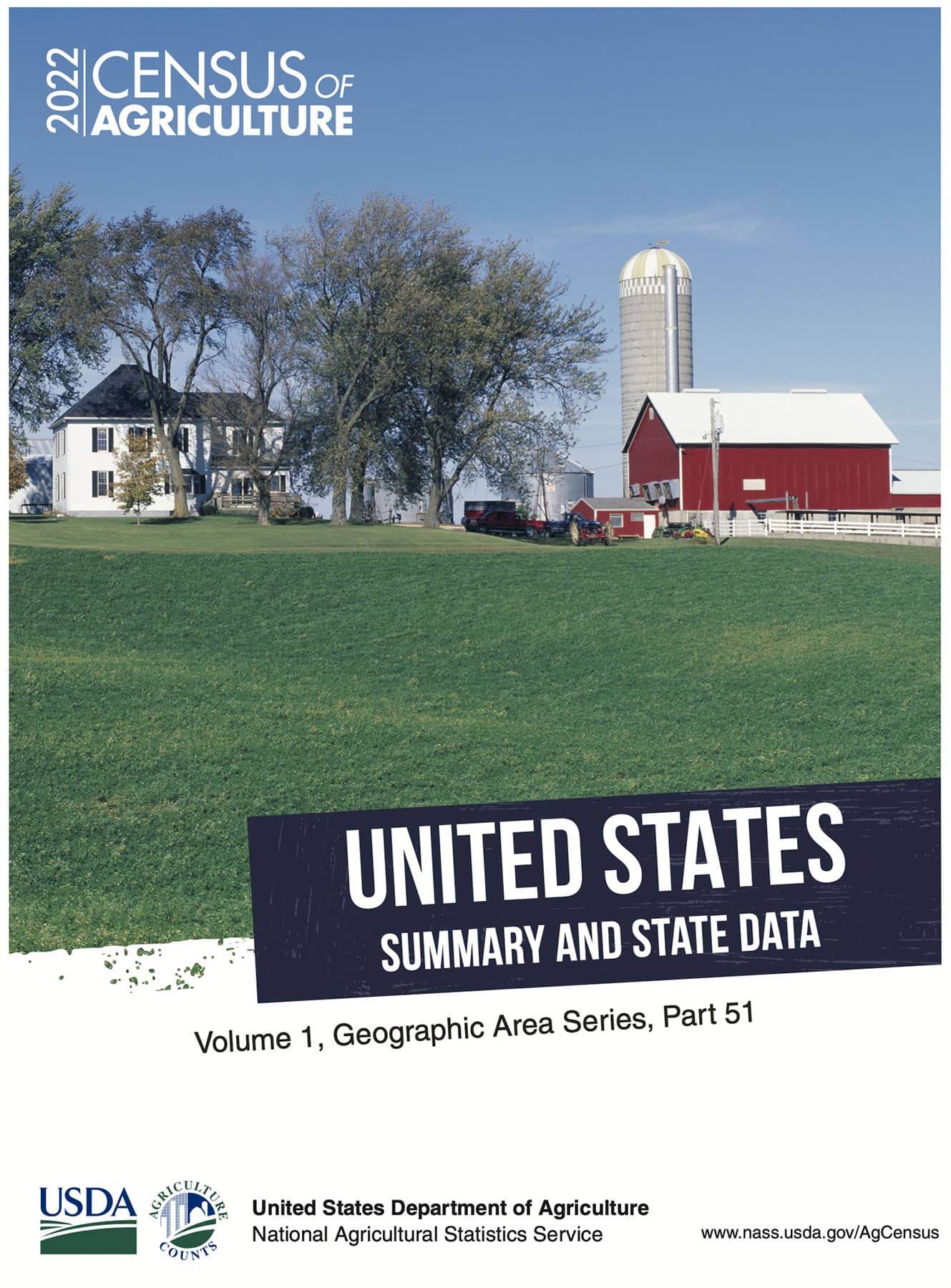As he announced the release of the USDA’s 2022 Census of Agriculture on February 13, U.S. Agriculture Secretary Tom Vilsack painted a portrait of a farming industry at risk of stagnating, but with opportunities to innovate.
The AgCensus report, released every five years, shares the results of anonymized surveys of the entire U.S. agriculture market. This report is the most comprehensive dataset we have on the state of the agriculture market, tackling topics from crop types and farm size to farm income, expenses, and demographic breakdowns of who is producing America’s food.
In his announcement, Vilsack noted how agriculture in America has never been more efficient–highlighting the industry’s threefold increase in productivity since 1948 without an equivalent increase in inputs–yet warned of the decrease in both land use and farmers laboring the land.
Since the 2017 survey, America has lost nearly 7% of its farms and more than 2% of its total farmland. This represents nearly 142,000 farms and 20 million acres of land, or, as Vilsack put it, the loss is equivalent to the area of “every New England state with the exception of Connecticut.”

These losses have especially impacted small- and medium-sized farms in small rural communities. As a result, food increasingly needs to be shipped from farms further and further away and preserved for longer, growing its carbon footprint. Additionally, communities may go days or weeks without access to fresh produce if storms, droughts, or diseases wipe out seasonal crops.
“This survey… is a wake-up call,” Secretary Vilsack said. “This survey is essentially telling us, asking the critical question of whether as a country, are we okay with losing that many farms? Are we okay with losing that much farmland? Or is there a better way?”
CEA’s Potential as a Better Way
Climate-smart agriculture is a tool for farmers to increase the resource efficiency and profitability of their farms. CEA, when done with a resource-efficient intention, is a form of climate-resilient agriculture. Beyond the obvious cost benefits, Vilsack also noted that climate-smart agriculture can create “an opportunity for farms to qualify potentially for ecosystem service market credits, which is cash coming into the farm for environmental results that can occur only on the farm,” Vilsack said. Any farm can tap into these programs and grants.
But what exactly is “climate-smart agriculture?” The first step in establishing resource-efficient and climate-smart practices in CEA is to get an understanding of the efficacy of existing protocols through data collection. This is an area of focus for RII and the goal of our PowerScore platform. PowerScore reveals operational key performance indicators of facilities and crops to compare against key performance targets and see year-over-year trends. This platform is available to any CEA operator of any size and standardizes the resource impacts of energy, water, and emissions to enable data-driven decision-making.
By quantifying the resource efficiency and climate impacts of different agricultural and CEA systems and practices, growers and farmers can begin taking a scientific approach to establishing benchmarks, improving processes, and diversifying their business.
And despite Vilsack’s warning about the agriculture industry’s stagnation risk, many participants are innovating in the space at all levels. Take for example The Chef’s Garden, a Huron, Ohio-based family farm. The Jones family is blending traditional regenerative farming methods with innovative technology to serve its wholesale grocer customers as well as its retail home delivery clients.
The family adopted regenerative farming practices, such as revitalizing soil by allowing it to rest in fallow fields and by planting specific cover crops to enrich it with nutritionally dense compost, after the family used chemical fertilizers for years going back to the 1970s. The farm grows in indoor, greenhouse, and outdoor environments. Greenhouses vary from simple hoophouses to medium-tech structures enabling the family to grow a variety of crops year-round.
CEA Hinges on Innovation
This type of innovation and business redefinition is happening at all levels of the CEA industry. LED lighting companies, in partnership with growers and academics, are pushing the boundaries of lighting intensity and spectrum science, discovering the influence of these qualities on crop outcomes. HVAC systems increasingly are incorporating energy-efficient heat pumps with lower carbon footprints. Advancements in automated environmental control systems and artificial intelligence are unlocking the CEA’s sustainability potential, especially with water energy usage, and environmental accountability.
These technological quantum leaps are making advanced energy-efficient lighting fixtures, HVAC systems, environmental controllers, and robotics, among other automated CEA systems, more accessible. In turn, these technologies are helping farmers of all sizes reduce costs and keep food prices affordable.
This combination of larger industry leaders innovating out of opportunity and small to medium farms innovating out of necessity is pushing the boundaries of CEA and filling this period with endless possibilities to improve data-driven sustainable farming practices, fresh food access, and community resilience.
In the coming months, RII will be diving into the AgCensus data to identify specific areas where CEA players have opportunities to innovate. In these later reports, CEA operators will understand the U.S. agriculture market’s strengths and deficiencies, as well as learn how they can work with agencies like the USDA to unlock more support from the government.
Join us on Jul 9, 2024 at 1pm ET for our “Emerging Trends in Floriculture Greenhouse Production: Insights from the USDA Agriculture Census” webinar, which will present the latest floriculture statistics and emerging trends derived from the AgCensus data. Register for the webinar here.






